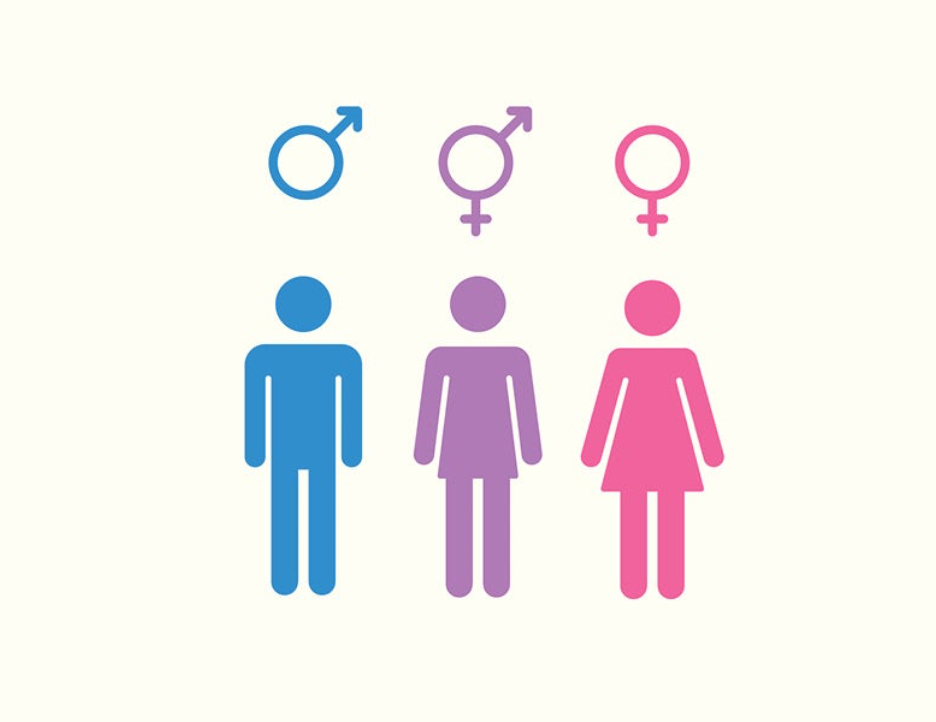Daily life is plagued by all sorts of innovations which, at times, can mask the lack of societal progress over the last couple of centuries. Our society remains white, male-dominated and those disadvantaged by the patriarchy struggle in their attempts to overcome it. The effects of imperialism have globally popularized western standards including a fixation with the gender binary.
The gender binary understands gender biologically. It admits two genders, male and female, each with traditional roles to uphold. Under the gender binary, women birth and raise children, while men provide financially for their families. These traditional gender roles are often traced back to biological motivations such as the need to procreate and the construction of hunting groups to ensure the survival of mankind. As society has become more complex, gender theory has begun to understand gender as performative, a social construct normalized through daily practice and used to preserve a heteronormative world. Gender performance is a vital part of upholding the gender binary, because witnessing these daily gendered behaviors makes it natural for people to want to remain within the constraints of their genders.
Activists have been voicing their contempt for the patriarchy for centuries, but very little has been done until recently. In the United States, womens rights were taken into account when the nineteenth amendment was ratified on August 18th, 1920. This step toward gender parity took place, because women were allowed to partake in what had previously been deemed an exclusively male activity. Society’s idea of women became more flexible throughout the twentieth century, and the workforce incorporated a substantial amount of married women. For the first time, more women sought higher education, and from these advances, the two-income family was born. Both men and women could see themselves providing for their families and going outside what was expected traditionally of their genders.
Although progress, these accomplishments are ineffective at overcoming the gender binary and its stereotypes. In the United States, its been common to see women work alongside men for decades, yet women, on average, are only paid 81% of their white male counterparts’ wages. And despite it being modern times, only 9% of workplaces offer paternity leave following the birth of a child.
The lack of extensive change to the gender binary has led to smaller steps that have become a vital part of creating a world existing outside convention. Over the last couple of decades, one of those small steps has been taken by the fashion industry. Androgynous movements and genderless clothing have been popularized as many LGBTQ+, black, indigenous and other people of color strive toward limitless self-expression. Artists like Jaden Smith are embracing garments typically deemed appropriate for the opposite gender, as well as sporting more androgynous looks with styles not specifically tailored for males or females but flexible enough for anyone to wear. BTS, a popular South Korean boy band, razed a very exclusive western industry, and critics instead chose to nitpick their fashion choices in an attempt to downplay their success. Following BTS performance at the 2018 Billboard Music Awards, a news anchor went on to note that the members looked like a group of my female friends who drive trucks. The constant mocking of BTS as females stems from the unwillingness of people to accept changes in gender expression and fashion, as well as from a deeply rooted xenophobia.
Notably, the steps these pioneers in fashion take forward can also seem like drawbacks, because while many people of color partake in gender-bending fashion, praise usually occurs once a cis-gendered a person whos gender identity correlates to their sex assigned at birth white man participates. Men like Harry Styles and Timothy Chalamet are known for their wide-ranging editorial looks that feature garments such as skirts and dresses. These looks are praised, rightfully so, but their risque choices are for the most part magazine exclusive, not part of their own fashion, and not the first of their kinds. These men are able to separate themselves from gender-bending fashion this way, wearing it for a photoshoot and moving on, a privilege that individuals from oppressed communities dont always have. Being the primary beneficiaries of the patriarchy, cis-gendered white men are not scrutinized and ridiculed in the same way other people, predominantly people of color and other minorities are. For that very reason, it is crucial for these men to use their privilege and become allies, supporting those who are prone to ridicule. Fashion becoming genderless helps society become accustomed to people acting outside of their birth gender, helping that concept become the standard.
A more profound attack on the gender binary has been the awareness brought to individuals with different gender identities. While many feel comfortable with their gender assigned at birth, those who are exploring past the binary are pioneers in expanding what gender is commonly associated with. The rise in androgynous fashion can also be associated with this movement, because non-cisgender individuals associations with gender and fashion may differ from their cisgendered counterparts. Although, people on different parts of the gender spectrum do not need androgyny to assume their identities, helping to further propagate the notion that clothing is not gendered or constrained by gender in any way can help break down the most accepted of boundaries. Terms such as transgender, non-binary, bigender, gender-fluid and many more have become embraced by people who identify with an identity outside of their birth gender. Gender identity is also tied to different cultures that present gender alternatively to traditional western society. Viewing gender on a spectrum can break down gender stereotypes, while simultaneously making people comfortable with the labels they choose.
Pronouns are also associated with gender identity. Commonly used pronouns, she/her and he/him are associated with those identifying as female and male respectively, but other individuals have chosen to use pronouns such as they/them regardless of their gender identity, though those pronouns are most commonly associated with non-binary identities. Neopronouns are gender-neutral pronouns such as ze/zir. Certain individuals also choose to identify with several pronouns and may use specific ones with different groups of people. The normalization of various pronouns and different identities can lead to a culture of people where automatic assumptions of ones gender based on appearance and presentation can be avoided.
Completely overcoming the gender binary will happen in the future for sure, but its not something society has been able to accomplish as of now. Members of every gender identity having the opportunity to achieve any job position and being regarded as equal to their peers helps to blur gender lines and promote equality. An environment where automatic gender-based assumptions are avoided can promote the idea that everyone is equally capable of being who they choose to be. Unorthodox couples such as couples made up of members of the LGBTQ+ community shouldnt have to take on traditional roles of male and female to be validated. Society itself, while progressing, isnt entirely accepting of those who attempt to express themselves regardless of gender. This creates a world where anyone breaking those norms has to face severe interrogation for doing something as simple as dressing as they choose. Eliminating criticism of those expanding what it means to be a man, a woman, and a person can make the journey toward an egalitarian society smoother. Expanding the gender binary is also different in different nations. Creating a safe space for people all around the world is also required for those breaking generational gender roles to feel more comfortable in creating a path for themselves. Doing all these things feels like a lot to take on, but can create a more accepting world. Dissent of the binary now can eliminate barriers for future generations.
 Alondra Martinez, Alumni at UCTech
Alondra Martinez, Alumni at UCTech 
 Julian Assange's Extradition Ruling
Julian Assange's Extradition Ruling 